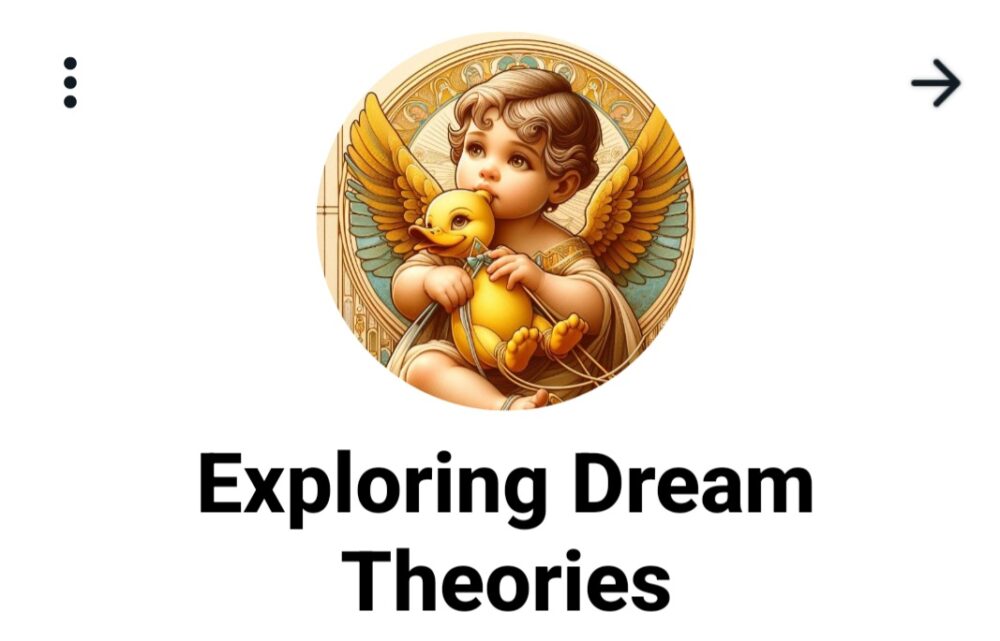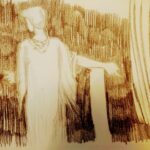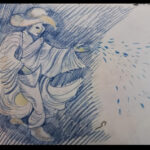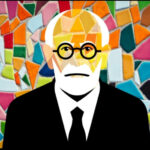The integration of dreaming into various artistic mediums, notably comics art, book illustrations, and French bande dessinée, alongside the specific contributions of figures like Jack Kirby, Neal Adams, and the pioneering comic “Little Nemo in Slumberland” by Winsor McCay, provides a rich tapestry through which the complex and enigmatic phenomenon of dreaming is explored and represented.
The domains of comics art, book illustrations, and French bande dessinée (graphic novels) further enriches the narrative, showcasing how these visual storytelling mediums contribute unique perspectives on the depiction and interpretation of dreams. These forms of art, with their distinctive blend of textual and visual elements, provide a rich canvas for exploring the surreal, abstract, and often enigmatic nature of dreams, thereby extending the dialogue between psychoanalytic theories and contemporary understandings of dreaming.
Comics art and graphic novels, with their sequential art form, offer a unique avenue for the visualization of dreams. The inherent flexibility of these mediums allows for the depiction of non-linear, fragmented, and surreal dream sequences in ways that can be both visually striking and emotionally resonant. In this context, dreams can be portrayed with a vividness and immediacy that text alone cannot achieve, engaging readers in a deeply immersive experience that mirrors the immersive nature of dreaming itself.
French bande dessinée, known for its rich tradition of storytelling and artistic innovation, often explores themes of memory, identity, and the subconscious, making it a fertile ground for the exploration of dreams. Works such as “The Incal” by Alejandro Jodorowsky and Moebius, and “The Sandman” series by Neil Gaiman, though not French but influential in the graphic novel genre globally, delve into dream worlds with intricate plots and complex characters, blending myth, fantasy, and reality in a manner that challenges and expands our understanding of dreams. These narratives leverage the dream motif to explore deeper psychological and existential themes, reflecting the interconnectedness of dreams with the broader tapestry of human consciousness.
Book illustrations, too, play a crucial role in bringing to life the ethereal and often surreal quality of dreams. Illustrations in children’s books and literary works often serve to bridge the gap between the waking world and the fantastical realms of dreams, guiding readers through stories that blend reality with imagination. The visual depiction of dreams in illustrations can amplify the emotional and psychological depth of the narrative, enabling readers to engage more fully with the dream experiences of the characters.
The integration of dreams into comics art, book illustrations, and French bande dessinée highlights the multifaceted ways in which dreams influence and are represented in cultural productions. These mediums offer distinctive visual and narrative strategies for exploring the dream state, each adding its own layer of meaning and interpretation to the complex phenomenon of dreaming. By engaging with these artistic representations of dreams, we gain insight into the universal human experience of dreaming, exploring its implications for understanding consciousness, creativity, and the human psyche.
In the broader context of Dr. Even’s exploration, incorporating these artistic mediums underscores the interdisciplinary approach necessary for a comprehensive understanding of dreams. It showcases how art—whether through the detailed panels of a graphic novel, the dynamic sequences of comics, or the vivid illustrations in a book—serves as a vital complement to scientific and psychoanalytic perspectives, offering rich, nuanced insights into the nature of dreaming. This synthesis of art and science not only enriches our comprehension of dreams but also highlights the creative potential of dreams as a source of inspiration across diverse fields of human endeavor.
Comics Art and Graphic Novels: The sequential art form inherent in comics and graphic novels allows for a unique visual representation of dreams. This medium’s flexibility enables the portrayal of non-linear, fragmented, and surreal dream sequences, offering readers a vivid and immersive experience. Works such as “The Incal” and “The Sandman” series delve into dream worlds with intricate plots and complex characters, blending myth, fantasy, and reality. These narratives not only challenge our understanding of dreams but also explore deeper psychological and existential themes, reflecting the interconnectedness of dreams with human consciousness.
“Little Nemo in Slumberland : created by Winsor McCay in the early 20th century, stands as a pioneering work in the intersection of comics and the exploration of dreams. This innovative comic strip, which debuted in 1905, chronicles the nightly adventures of a young boy named Nemo as he travels through the fantastical and often surreal landscape of Slumberland, a realm he visits in his dreams. The vivid, imaginative world McCay crafted in “Little Nemo” not only captivated readers with its artistic brilliance and narrative creativity but also provided a visual and thematic exploration of dreaming that aligns with and illuminates various theories of dreaming. McCay’s “Little Nemo in Slumberland” serves as a rich visual representation of several key aspects of dream theory. For instance, the comic strip mirrors the Freudian perspective on dreams as a manifestation of unconscious desires and anxieties. Each strip, with its detailed, bizarre landscapes and surreal adventures, can be seen as reflecting the inner workings of Nemo’s unconscious mind, where latent desires and fears are played out in symbolic form. Freud’s theory of dreams as wish fulfillment is vividly illustrated in Nemo’s adventures, where he often finds himself in scenarios of grandiosity or facing obstacles that symbolize common childhood fears and desires. Moreover, the often illogical, fluid nature of the narratives in “Little Nemo” captures the essence of dream logic, where normal rules of time, space, and causality do not apply. This aligns with the concept of primary process thinking in psychoanalytic theory, which describes the non-linear, associative nature of thought processes in the unconscious mind, akin to the dream state. McCay’s ability to blend and bend reality in his art effectively visualizes this theory, presenting readers with a visual representation of how dreams might function as a psychological space where the mind can explore and reconcile internal conflicts. Jungian interpretations of dreams as expressions of archetypal symbols and collective unconscious also find resonance in “Little Nemo.” The recurring themes, characters, and motifs in Nemo’s adventures can be seen as representing universal symbols or archetypes that carry a shared meaning across cultures. Slumberland, with its fantastical creatures, imposing figures, and symbolic landscapes, can be interpreted as a rich tapestry of archetypal imagery, reflecting deeper truths about the human psyche and the collective human experience. Furthermore, from a contemporary neuroscience perspective, “Little Nemo” reflects the brain’s remarkable capacity for creativity and neural recombination during the REM (Rapid Eye Movement) stage of sleep, when dreaming most often occurs. The strip’s imaginative landscapes and scenarios can be seen as parallel to the way the brain synthesizes experiences, memories, and emotions to create the vivid, often bizarre narratives experienced in dreams. This process is crucial for emotional regulation, problem-solving, and the consolidation of memories, highlighting the functional significance of dreaming. “Little Nemo in Slumberland” stands as a testament to the enduring fascination with and complexity of dreams. Winsor McCay’s creation not only predated but also anticipated many of the developments in the scientific and psychological exploration of dreams, offering a unique, artistic lens through which to engage with and reflect upon the theories of dreaming. As both a pioneering work of comic art and a profound exploration of the dream world, “Little Nemo” remains a valuable cultural artifact for understanding the multifaceted nature of dreaming and its significance within the human experience.
Jack Kirby’s Comics Art: Kirby’s work, characterized by its imaginative universes and dynamic compositions, mirrors the boundless nature of the dream world. His narratives, filled with god-like beings and existential battles, resonate with the dream-like exploration of deeper truths. Kirby’s storytelling techniques, incorporating elements of dream logic, invite readers to question the nature of reality, echoing the transformative nature of dreams.
Neal Adams’ Comics Art: Adams brought a level of realism and emotional depth to comics that parallels the profound nature of dreams. His detailed renderings and innovative layout designs mirror the way dreams operate, with heightened emotions and fluid perceptions of reality. Adams’ work on social justice themes within comics reflects the role of dreams in processing and confronting real-world issues, highlighting the power of storytelling to reflect, question, and potentially transform societal norms.
In conclusion, the exploration of dreams through these artistic mediums and creators enriches our understanding of the complex phenomenon of dreaming. These narratives and visual representations offer distinct perspectives on the dream state, each adding its layer of meaning and interpretation. By engaging with these artistic renditions of dreams, we gain insight into the universal human experience of dreaming and its implications for understanding consciousness, creativity, and the human psyche. The interdisciplinary approach, combining art, science, and psychoanalysis, underscores the multifaceted nature of dreams and highlights the creative potential of dreams as a source of inspiration across diverse fields of human endeavor.







